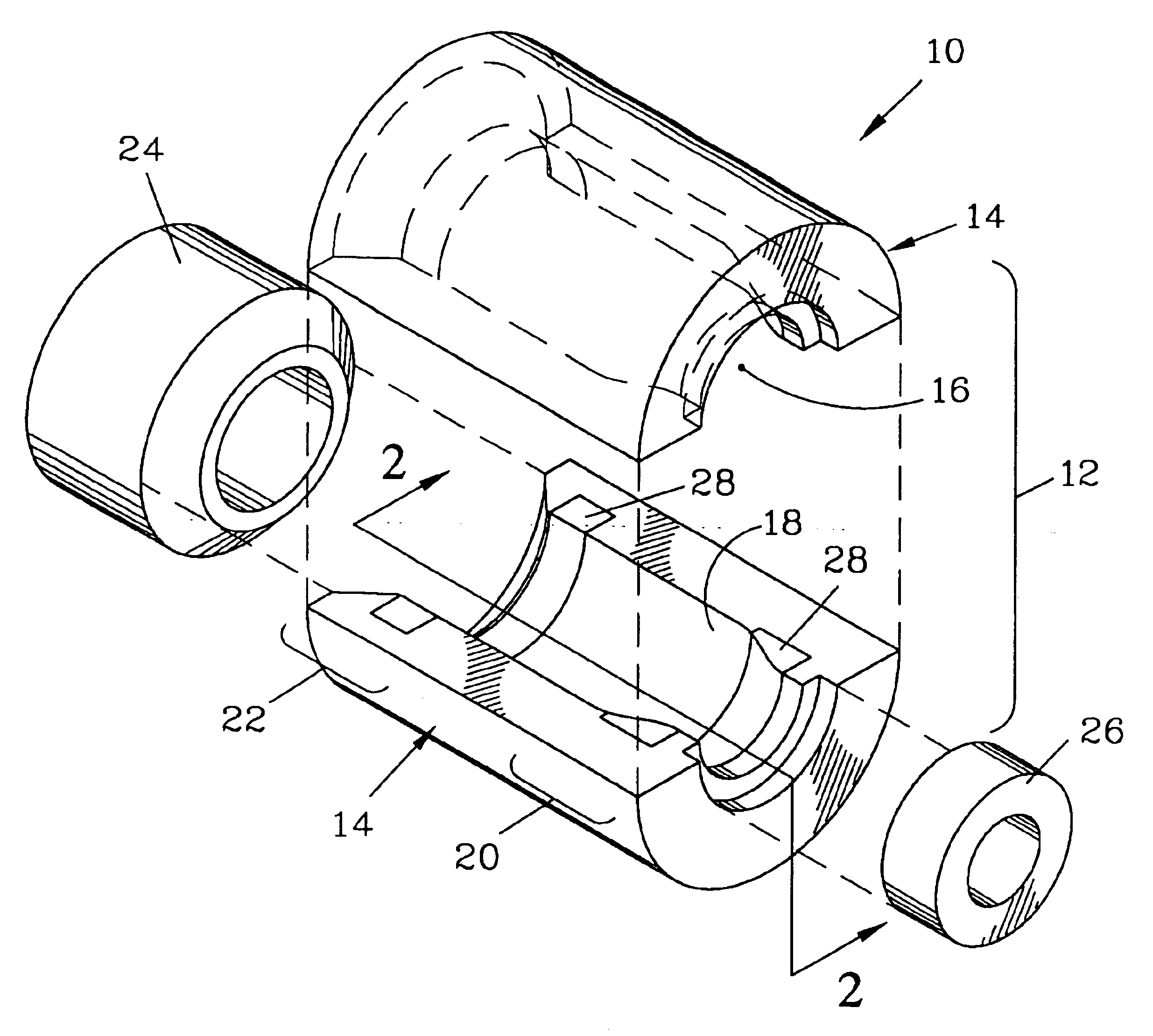Method for fabricating bottle molds
a bottle mold and mold technology, applied in the field of molds, can solve the problems of time-consuming and expensive, and achieve the effects of convenient machined, enhanced mechanical interlocking, and local melting
- Summary
- Abstract
- Description
- Claims
- Application Information
AI Technical Summary
Benefits of technology
Problems solved by technology
Method used
Image
Examples
Embodiment Construction
FIG. 1 is an exploded isometric view of a metal blank bottle mold 10 which forms one embodiment of the present invention. The bottle mold 10 has a split mold body 12 having two mating body sections 14, each having a portion of a bottle cavity 16 therein. The bottle cavity 16 is bound by a glass contact surface 18, which passes through a neck region 20 and a baffle region 22 of the bottle mold 10. When a “gob” of glass (not shown) is blown in the bottle mold 10, a baffle 24 and a neck ring 26 are employed to close the bottle cavity 16.
The body sections 14 of the bottle mold 10 are fabricated from cast iron which is well suited to withstand the thermal stress and abrasive action of the “gob” of hot glass as it is blown to form a crude glass shape which conforms to the bottle cavity 16. However, in the neck region 20 and in the baffle region 22, dissimilar metal inserts 28 that are fabricated from a nickel alloy are embedded in the cast iron to provide greater resistance to the action ...
PUM
| Property | Measurement | Unit |
|---|---|---|
| Grain size | aaaaa | aaaaa |
| Length | aaaaa | aaaaa |
Abstract
Description
Claims
Application Information
 Login to View More
Login to View More - R&D
- Intellectual Property
- Life Sciences
- Materials
- Tech Scout
- Unparalleled Data Quality
- Higher Quality Content
- 60% Fewer Hallucinations
Browse by: Latest US Patents, China's latest patents, Technical Efficacy Thesaurus, Application Domain, Technology Topic, Popular Technical Reports.
© 2025 PatSnap. All rights reserved.Legal|Privacy policy|Modern Slavery Act Transparency Statement|Sitemap|About US| Contact US: help@patsnap.com



